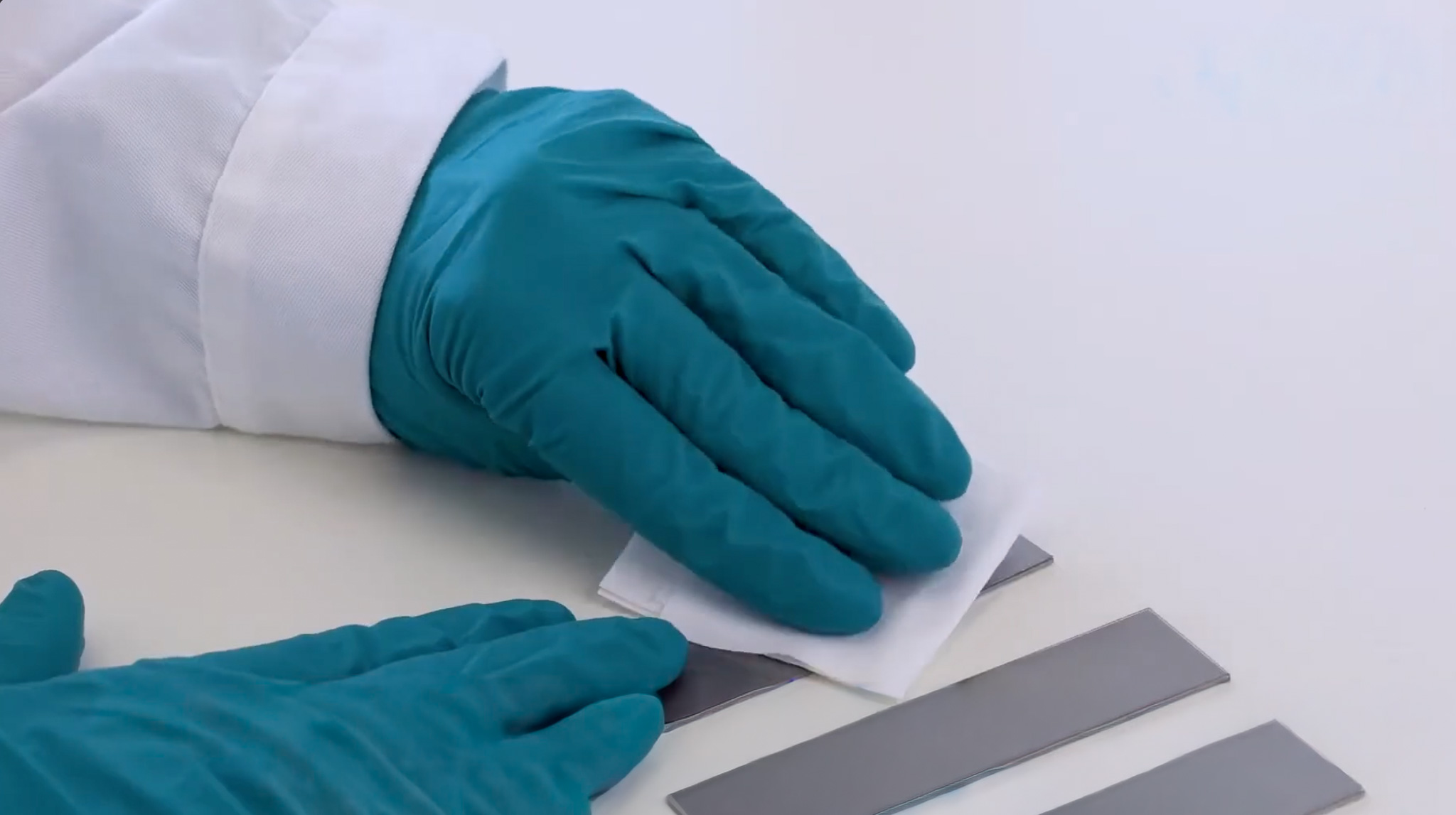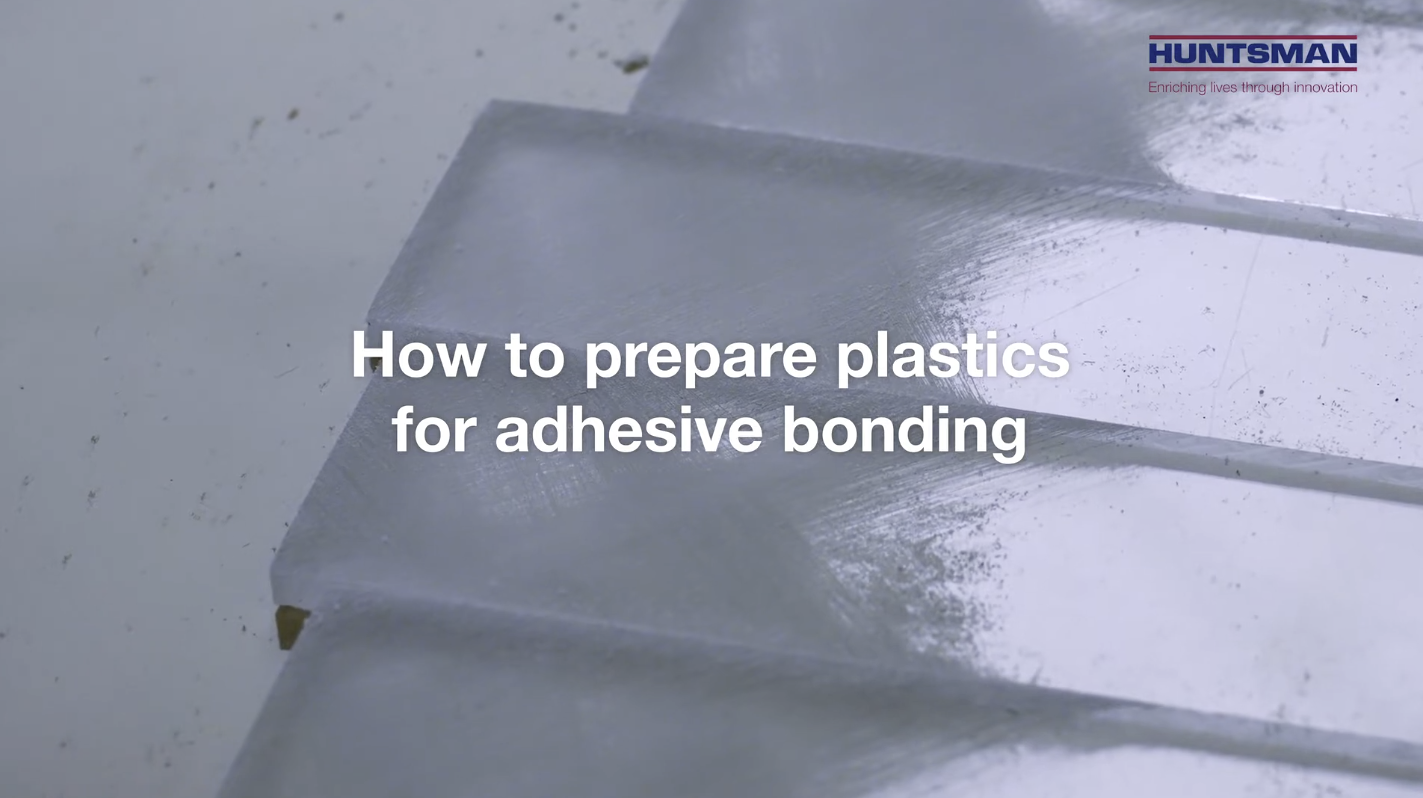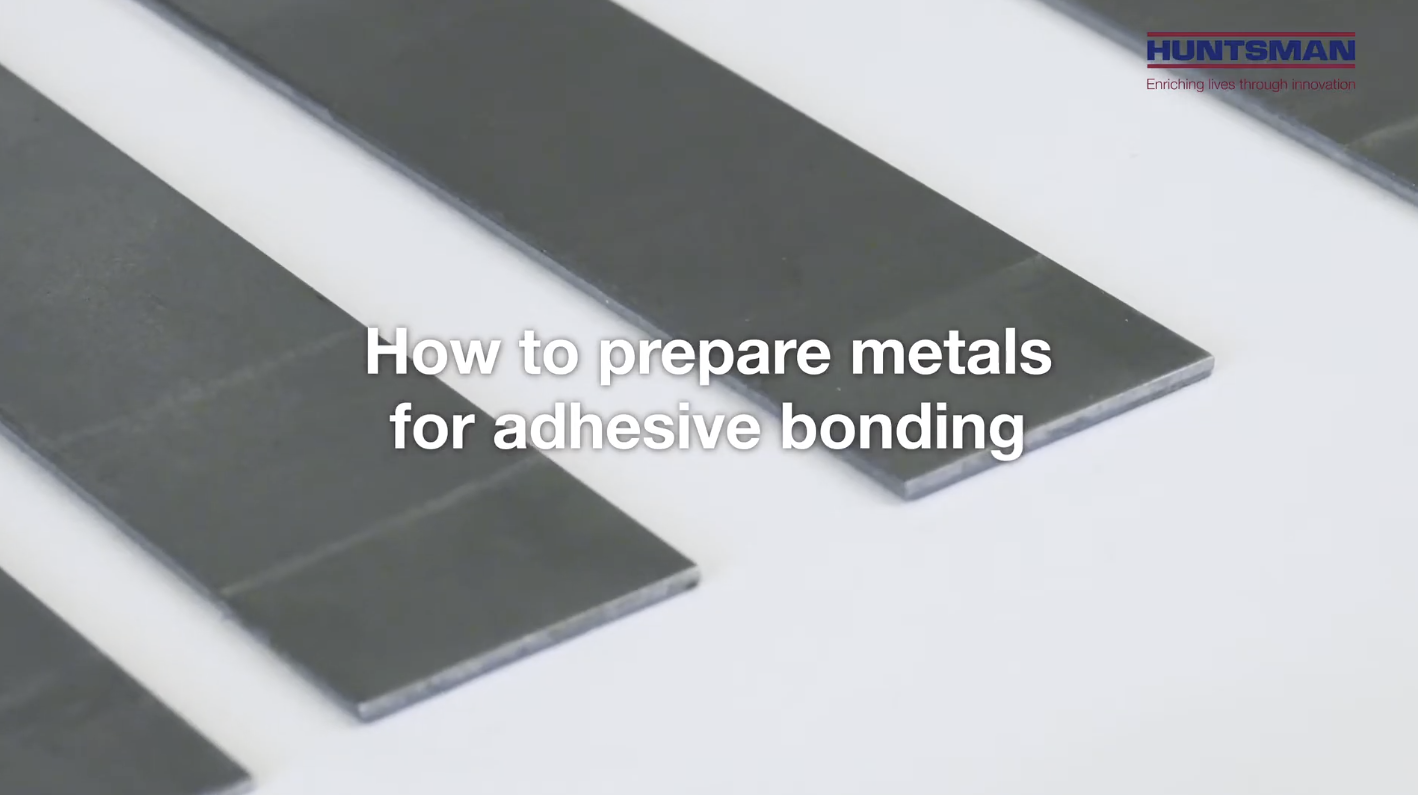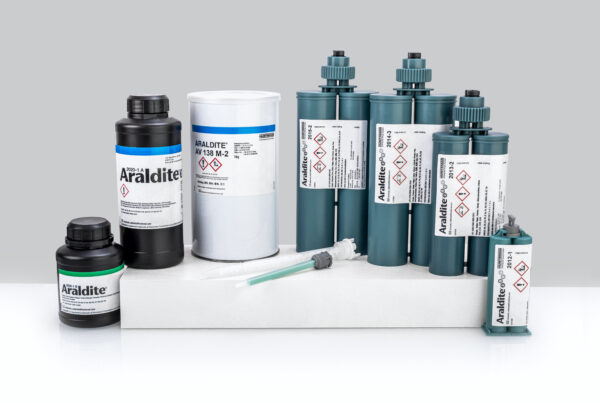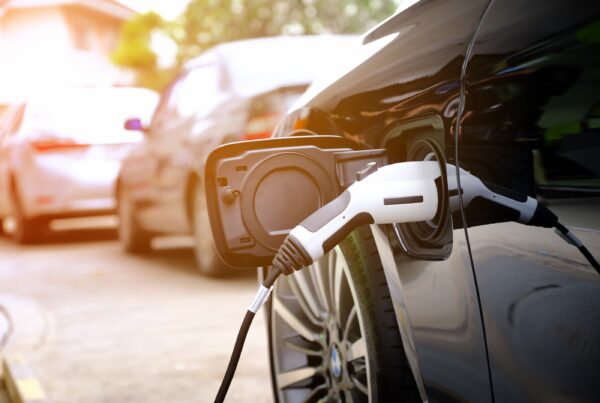Key Points
- Surface preparation eliminates contaminants e oxides ensuring an optimal wettability and a increased area of adhesion for stronger bonds.
- Degreasing, abrasion , and chemical or physical treatments are the three pillars for achieving effective and durable bonding on different types of substrates.
- Even if the surface appears clean , degreasing is essential and can be performed with solvents, detergents, ultrasound, or alkaline methods.
- Controlled abrasion improves adhesive anchorage and is accomplished by sandblasting, sanding , or dedicated techniques for plastic and metal materials.
- Special treatments such as plasma, anodizing or primer application ensure maximum chemical compatibility and best performance over time.
Surface preparation is one of the most important steps to achieve high adhesive strength and improve the performance of the adhesive itself. For effective bonding, the adhesive must completely wet the surface of each substrate.
Most surfaces are covered with layers of contaminants, such as dust, oils, grease, and oxide. These contaminants adversely affect adhesion, and if they are not properly removed before applying the adhesive, bond failure can occur.
Surface pretreatments are aimed at removing all types of contaminants on the substrate surface, allowing the adhesive to settle on the actual surface instead of its apparent surface. Proper pretreatment can activate the surface energy of substrates and increase the active bonding area to improve adhesion.

How to prepare surfaces before applying adhesive
Some of the methods for surface preparation before the application of industrial adhesives ARALDITE® are:
- Degreasing
- Abrasion
- Chemical or physical treatments
These surface preparation methods are suitable for most industrial applications; however, the type of pretreatment will depend on the type of substrate.
Degreasing: the basis of any good surface preparation
The removal of oil, grease and release agents is the first step in ensuring effective bonding.
Even when the surfaces appear clean, the degreasing must be performed by one of the methods given below:
- Steam Degreasing: pieces come suspended in a’degreasing unit with common solvents (acetone, MEK, ethanol, isopropanol).
- Solvent immersion: two tanks with the same solvent, one for washing and one for the rinsing; when the first is contaminated, the tanks are reversed.
- Manual cleaning: with brushes, cloths o papers free of lint e clean solvent; for fine work you can use the aerosol spray cleaning to avoid residue.
- Alkaline degreasing: with solutions to hydroxide base, phosphates o organic surfactants; may be hot runner o cold, with washes e neutralization final.
- Ultrasonic degreasing: suitable for samples of small sizes.
- Degreasing with detergent: by means of nonionic detergents, rinsing with warm water e drying with forced hot air.
Abrasion: create an adhesive-ready surface
A’controlled abrasion improves themechanical anchorage e promotes wettability.
After processing it is necessary to thoroughly remove all residual particles, repeating the degreasing or by using soft brushes e industrial suction.
Plastic and composite surfaces
To remove traces of release agents, the surface layer must be removed. Sandblasting can be replaced by manual sanding o mechanical, followed by thorough cleaning.
Sui composites it is recommended to use the peel ply, a applied fabric during the molding e removed immediately before of bonding, which leaves a rough and clean surface, ready for theindustrial adhesive.
Cryoblasting with CO pellets₂ represents aninteresting alternative, in that it eliminates abrasive residues and reduces the risk of overheating.
Metal surfaces
The preparation of metals involves the removal of oxides e corrosion, preferably by sandblasting. The most common abrasives are:
fused alumina, ideal for aluminum alloys e stainless steels;
silicon carbide, more sharp e friable, suitable for special alloys o extremely hard materials.
The grain size affects the quality of the finish: For most applications, grits between 46 and 120 mesh. If the sandblasting is not possible, a brushing or sanding with abrasive fine (alumina or silicon carbide), followed by cleaning and drying.
The painted surfaces must always be stripped, since the poor adhesion of paint to metal can reduce the strength of the joint.
Chemical and physical treatments for maximum performance
When the required performance is particularly high, surface preparation may include specific treatments.
Treatments for metals
Acid etching: removes the oxidized layers and forms a surface that is chemically compatible with theadhesive. The acids used vary according to the metal: chromic acid for aluminum, sulfuric acid for stainless steel, nitric acid for copper.
Anodizing: widely used in aerospace field, deposits a porous oxide layer that promotes the penetration of the adhesive or primer. To obtain a good adhesion, the layer should not be sealed.
Application of primer: used for metals, glass and ceramics. The primer, often similar to adhesive but more fluid, Easily wets the surface and creates a strong bond after curing. It is essential to adhere to application times and wash surfaces with deionized water after treatment.
Treatments for plastics and composites
The type of polymer and the production process can influence theeffectiveness of physical treatments:
- Low-pressure plasma: increases thesurface energy and allows forexcellent wettability. Suitable for small parts o hard-to-reach areas.
- Atmospheric plasma: applied in ambient air, ideal for larger surfaces.
- Flame treatment: oxidizes the surface layer, increases the polarity and improves the wettability.
- Crown treatment: generates oxygen and ozone, activating the plastic surface.
All of these treatments have limited stability over time, varying from a few hours to a few weeks depending on the material.
Efficacy as a function of surface preparation methods
Depending on the methods that are used for surface preparation the adhesive bonding will achieve more or less effective results:
- degreasing only: good;
- degreasing + abrasion: very good;
- degreasing + chemical treatment: excellent
The water drop test
A simple and straightforward test to assess the quality of pretreatment is the water drop test.
If a few drops of distilled water spread evenly over the surface, or if the water film does not break into droplets, the surface can be considered sufficiently clean.
A uniform wetting is a sign of good preparation: the same surface will also likely be wetted by the adhesive.
It should be considered, however, that some plastics, even when clean, are not wetted by water but may still be perfectly compatible with the adhesive used.
The water drop test thus provides a useful qualitative indication, especially for metals, but it must be interpreted in the context of the material to be bonded and the type of adhesive.

The importance of surface preparation for bonding
The quality of a structural bonding does not depend only on the choice of adhesive, but especially on the condition of the surface on which it acts.
Degreasing, abrasion e chemical pretreatments o physicists are not incidental steps: they are the heart of the bonding process, what guarantees the resistance, the durability and thereliability Of the bond over time.
Adhesives ARALDITE® represent the ideal solution for those who require high performance, but it is the correct surface preparation that transforms a good bond into a structural connection capable of lasting.
For more information on the methods of surface preparation for bonding using industrial adhesives contact our Mascherpa experts ;

